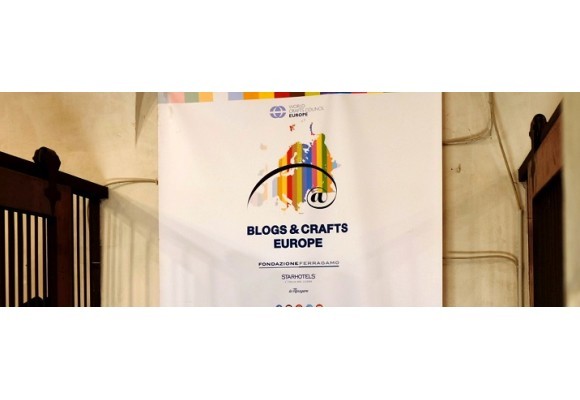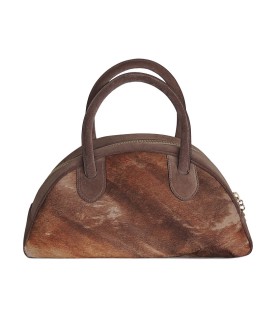A “pool” for man, the pewter
History
Pewter has an ancient history; a history that began in Italy in the 12th century and, as evinced by the statutes and regulations of the “Corporazione dei Peltrai” (The Association of Pewter-Makers), saw Venice as one of the most important cities of Europe. The solidity and effectiveness of the association which controlled the prices, quality, certainty and solidarity between members was a prerequisite for the development of research and the dissemination of innovative techniques.
If we add the influence of an environment rich in history, culture and art it would be fully fathomable that the quality of the objects is that of the ones exhibited in prestigious museums. These objects epitomize the genius, the harmony and the style of the best of the tradition of Italian craftsmanship.

Not everyone knows that the first findings of pewter are more than four thousand years old, and that many figurines and other small items were found in the tombs of the pharaohs of ancient Egypt. The first written testimonies of the relief of ordinary use of the pewter date in 813 A.D. in the Council of Reims, where they decreed to allow its use for the production of cult objects used for worship.
Since 1200, at the end of the great migrations that followed the fall of the Roman Empire, when populations began to settle permanently in the different European regions cutlery pewter diffused more and more and they went to replace the traditional clay and wood. In this period the masters of pewter-making began to join in corporations and in those years, which can be considered among the most prosperous for the craftsmanship, in the workshops molds made of earth, plaster or stone began to merge; between 1500 and 1600 began the construction of very costly, yet durable, iron, cast iron and bronze molds. This allowed a significant reduction in production costs resulting in further enlargement of the market.

Precisely for this reason between the sixteenth and seventeenth centuries there was the largest spread of pewter. With the outbreak of the French Revolution and the fall of the Venetian Republic there was an inevitable disappearance of the guilds (corporations) and with it the decline of a large part of this craft – which lasted until the end of the last war when this activity began to flourish again using new technologies without ever betraying its ancient and noble origins of craftsmanship.
Characteristics
The processing of pewter accompanied the progress of civilization, enriching its sophisticated technology without losing its characteristics. In fact, today, as then, is the hand of man to outline shapes and weld the parts, to shape the volume and carve the details. Whether it is forging by hammer or casting molds, there is always the craftsmanship, the sensitivity, the wise gesture that guarantees quality of the product.

The pewter is an alloy composed of 96% from pure tin, 0.5% Copper and 3.5% Antimony which is used to give rigidity. The pewter alloy is formed by inserting metal ingots into the crucible at a temperature of about 300 ° C. The liquefied metal is collected from the crucible with a ladle and poured into the mold in motion, mounted on a centrifugal machine. The centrifugal force helps the liquid metal to occupy all the space of the mold. Once solidified, the object is manually extracted from the mold and successively cleaned with a grinding process of any burrs fusion. If an object, as often happens, is composed of more pieces, it is necessary that every single piece is assembled through welding.
Finally, the object is inserted in the machines dedicated to tumbling in order to smooth the surface and makes it flatter and less opaque. The piece is then checked and the dents get straightened using special hammers.
The pewter, unlike other materials, does not oxidize and tends to remain unaltered in time without the need for particular care. However, you can take some precautions to keep it in perfect condition. It is advisable not to use the dishwasher and also the approach to direct sources of heat, due to the low melting point of the material that composed of. In case of stains you can then wash the pewter with water and a normal dishwashing liquid.
Pewter – Craftsmanship: a marriage that lasted for centuries
The dominant role of guilds in the Renaissance enlarges the cities’ power and wealth, and contributes to the elevation of the standards and habits of living, and it is then that the golden age of the art of smelter begins. Dishes made of pewter shine in the neat kitchen of bourgeois and on the cabinets, on the drawers, on the frames and on sills of the rooms. The ambition of the noblewomen of the countryside is the “local pewter”; richly decorated, and in the princely courts the “guardian of the pewter” watches over on the rich heritage of the tableware.

At the end of the sixteenth century the art of foundry reaches technical perfection with the execution of the works in pewter, which become real works of art. Ornamental friezes, geometrically arranged in the form of a finger, pearl or leaf shapes and floral patterns, traits of the ancient world transform pewter into a decorative element, where value lies not so much in the only formal structure, but rather in the richness of its different details.

In the decades following the Thirty Years War the art of foundry found itself a favorable terrain for a short period of time. Not only in private homes, in hospitals, in the bars and in the halls of the guilds, but also in the rooms of the rich patricians and nobility, but especially in the churches the pewter tableware found increasingly its environment next to silverware and continuously new pieces were produced.
If during the sixteenth century the ornamental character of objects had dominated, finished first in all relief, and later after the turn of the century decorated only for the handles and spouts of the containers or the edges of the plates, the mid-seventeenth century witness the return of the most strict form of smooth casting, which is rarely decorated with some chisel stamped motifs. The charming property of the pond, that sheen that makes it similar to silver is revived highlighted again.

The transition to the high Baroque style and then to the Rococo with its light, slender and whimsical objects, decorated with delicate asymmetric veins is unnoticeably accomplished with regard to the corresponding dies. The return of Silver thanks to growing prosperity of the population causes smelters to draw examples and models from it.
Mainly tableware, bowls, tureens and pot-bellied jugs provided with cover are produced for the expansion of consumption of beverages, such as tea or coffee. Even crucifixes, candelabras and holy water fonts are created in a harmonious fashion for domestic devotions. The large size of the bottles, trays and dishes invite to carve figures and mottoes in sleek design. Jugs and jars were produced in all types: covered, smoothed and often ornamented with spouts. The handles and belts were either smooth or decorated with light reinforcements. The fund was flattened welded, sometimes three feet, in the form of angel heads with wings or masks.

During the 1800s there is a gradual decline of the art of pewter. The severe style of classicism, which responds poorly to worked pewter, not allowing of the metal to issue any warmth in intimacy and familiarity, replaces the rounded lines with linear friezes bearing delicate developments in bas-relief of acanthus leaves, branches of oak, wires pearl and nodes adorned with garlands of flowers. Only when the reproduction of the same objects in the Biedermeier style began, there was a three decades reborn for the love for the pewter. However, in comparison with porcelain and crystal, the request remains almost insignificant.

In the late nineteenth century the floral style was introduced. In this period, major works were also performed in the implementation of both forms of the castings. It would be fair to assume that during the last century the process of industrialization and the decline of the style have had a mortal impact to the art of the smelter. The consequences of economic postwar hindered the creative activity of the workshops.

Now just a few masters can afford workers. But, it is thanks to these Masters and a number of single-branded activities that the ancient tradition has been preserved. They projected bridges to the future, preparing a favorable ground to reassert pewter. Today, in fact, along the reproductions of fine antique pieces from different periods and styles, manufacturers are able to offer newly developed objects, with sometimes surprising insights: the variety of possible forms, which the versatility of pewter allows, is actually only a limit to the imagination of the designer. If the antique pewter has a substantial value now, which you can admire only in museums or private collections, the ones that are produced nowadays by skilled craftsmen can give a touch of elegance to our homes, and that value is undoubtedly intended to grow over time and become the bequest of tomorrow.
Florence - XXIX edition for "Crafts and Palace" 15 - 17 September '23
Lucrezia Piscopo Art, winning project of the Lazio MarteLive 2021 regional final
Interview with Federica Rezzi G, winner of the Lazio MarteLive 2021 final, crafts section
From tradition to today, a special gift for a special professional
The beautiful works of Klimt on the ceramic eggs of La Terra incantata
Valentina Musiu and VALEgnameria, art and craftsmanship in a dynamic and colorful mix






















































